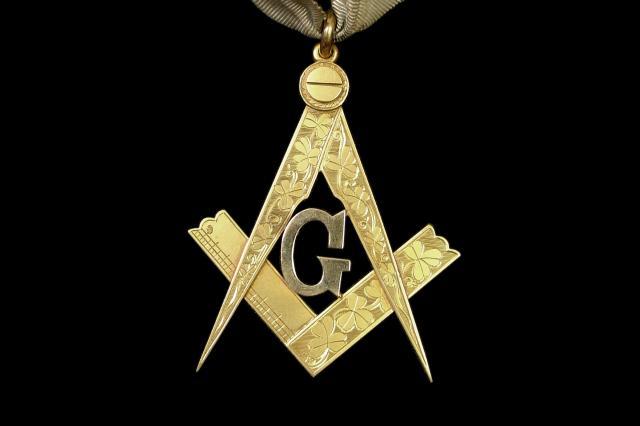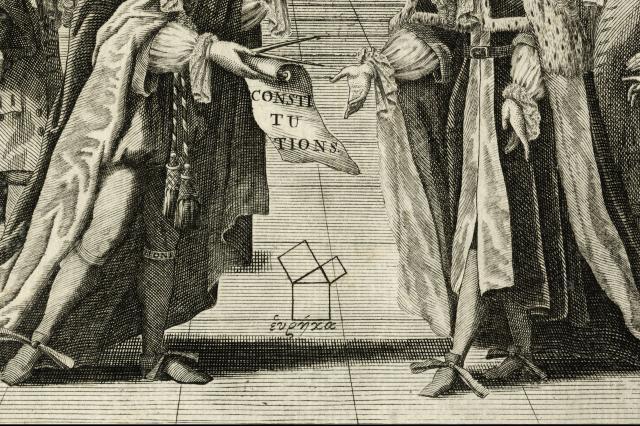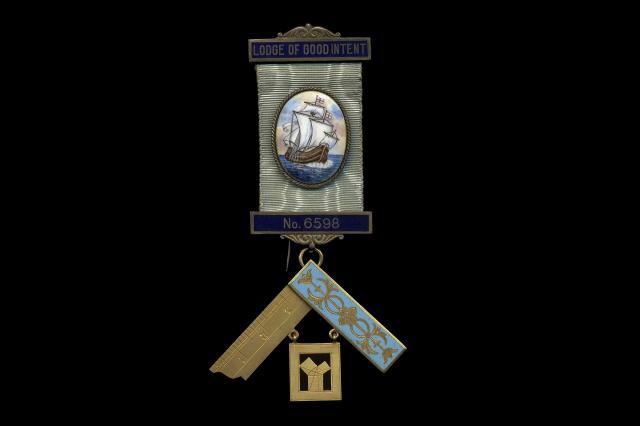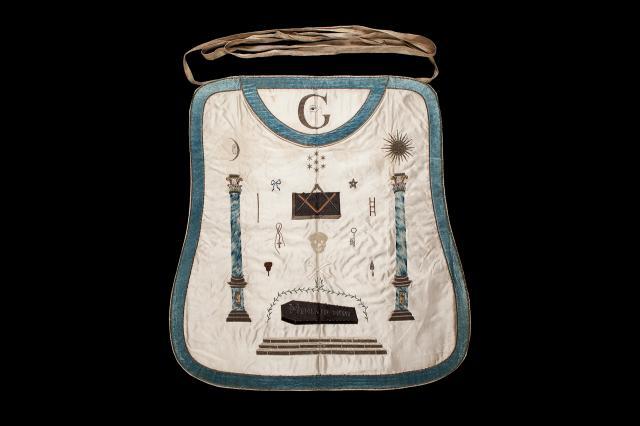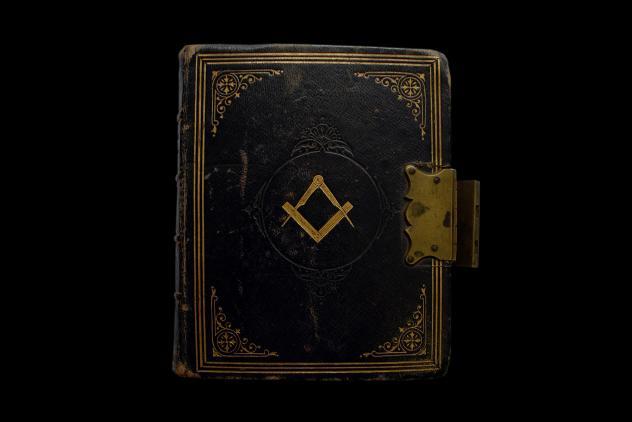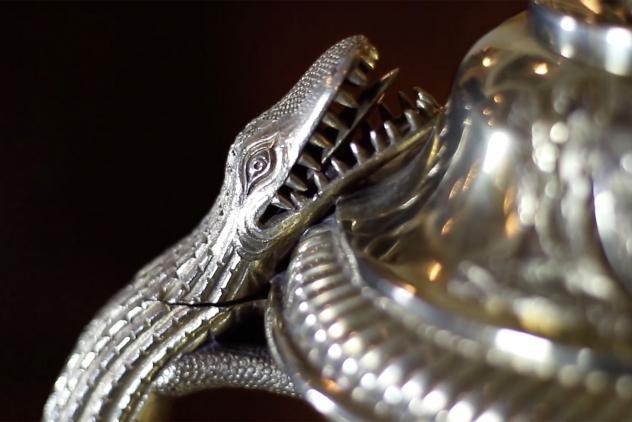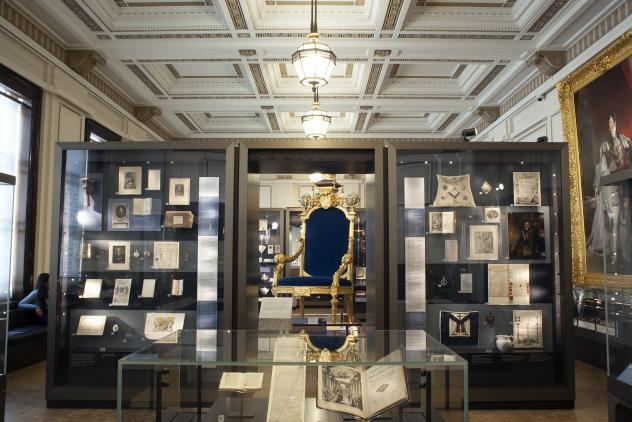In many countries, but not England, the letter G appears inside the square and compasses that freemasons use as their logo. It stands for ‘Geometry’ and is one of the oldest symbols in freemasonry.
The ancient Greek mathematician Euclid wrote a book called Elements, outlining the principles of geometry. It's one of the most reproduced books in history and shows how complex shapes can be made using just a pair of compasses and a straight edge. Euclidian geometry is the basis of operative stonemasonry and so connects to the ceremonies of freemasonry where members represent stonemasons constructing the Temple of Solomon.
The Constitutions of the Free-Masons (1723), which forms the basis of English freemasonry, celebrates a legendary history of freemasonry with geometry at its centre. On the frontispiece is the 47th Proposition of Euclid, sometimes called Pythagoras’ Theorem and still used by freemasons today as the badge of the Past Master of a lodge. You can sometimes see a cut-out letter G hanging from lodge ceilings showing that geometry is at the centre of the lodge.
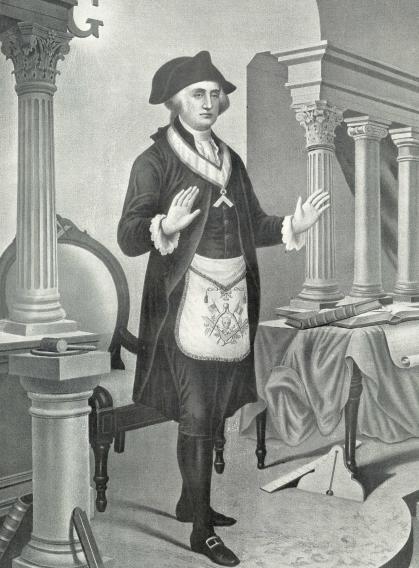
Some writers suggest that the G stands for 'God'. This would make sense if the letter changed as needed in non-English speaking countries (France would then use D for ‘Dieu’) but this does not happen. G also starts the Latin word ‘Geometria’ which is the root of the word for geometry in many languages.
Symbols are what we make them, so G can stand for anything that we choose but its original meaning for freemasons was geometry. In the USA the use of the G becomes more common in the 1800s, possibly to differentiate freemasonry from other friendly societies that also used the square and compasses. In England it disappears at the end of the 1700s as the symbols of freemasonry settled into their current form.
In our collections the G appears on aprons, jewels and rings among many other items. These are normally items made outside England or from the earliest days of freemasonry. To make matters a little more confusing, the Grand Lodges of Ireland and Scotland still use the G and some of the examples here are from the Irish Constitution.
Visit our exhibition Three Centuries of English Freemasonry and see if you can spot it anywhere.
